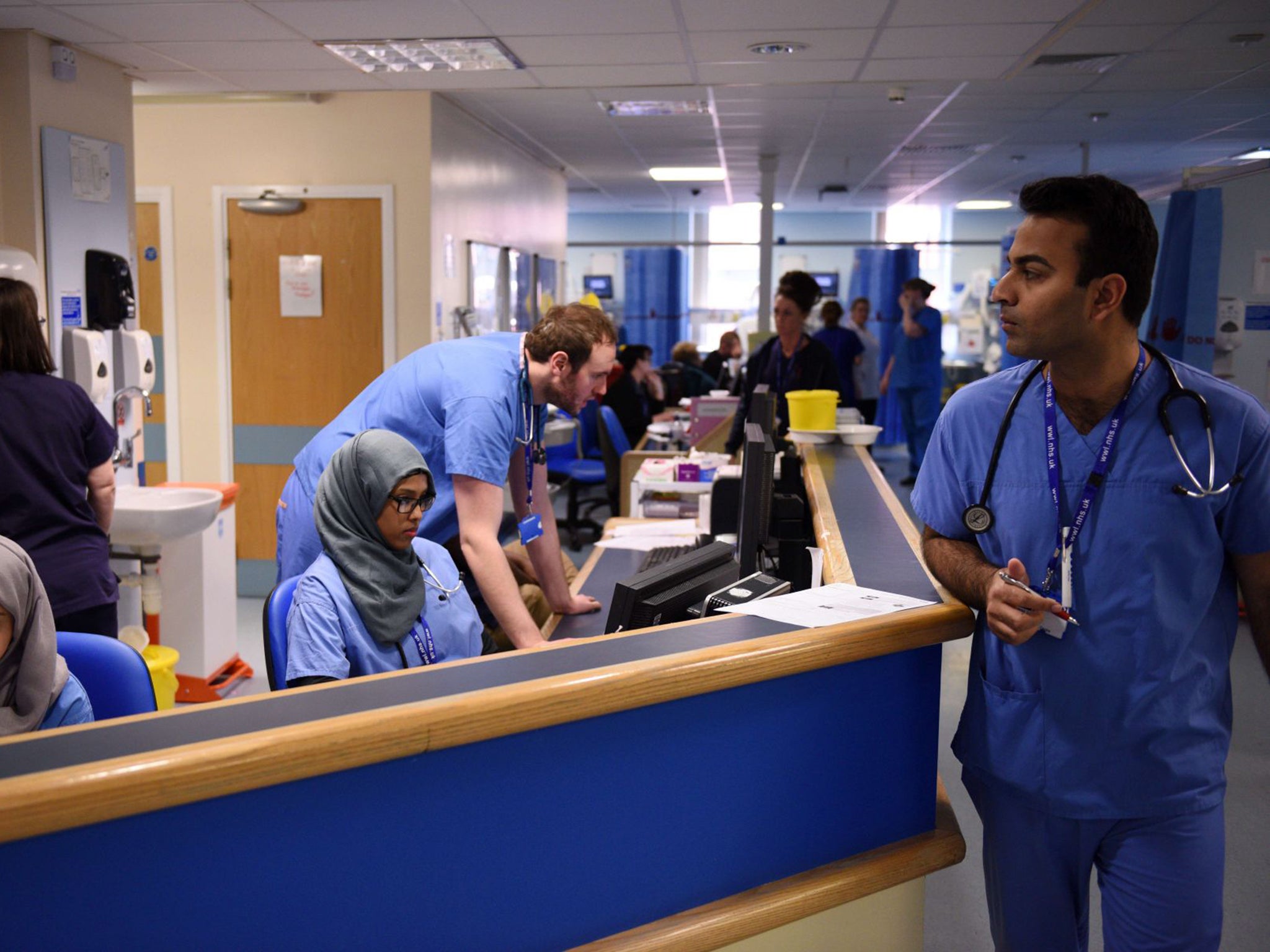A&E staffing ‘at crisis level’ as hospitals continue to miss waiting times
The target of seeing 95% of patients within four hours has not been hit by an A&E at any major hospital since July 2013

Major hospitals in England are failing to see almost one in seven patients within four hours, new figures show, as medics warn that emergency staffing has reached crisis levels.
New statistics for June reveal that nearly 15 per cent of people in larger A&E departments and almost 10 per cent of people in all hospitals are not discharged within what is considered the expected time.
The target of seeing 95 per cent of patients within four hours has not been hit by an A&E at any major hospital since July 2013.
It comes the day after the Royal College of Emergency Medicine warned that a gap between supply and demand for emergency doctors is leading to a “real crisis”.
A national shortage of emergency doctors also led the Grantham and District Hospital in the East Midlands to announce it was to temporarily close its doors at night.
NHS England defended the figures, saying it showed “another improvement in performance” at a time when “frontline services continue to come under intense pressure”.
June also saw an increasing number of patients attending A&E in England, with 1,950,754 people treated in hospitals across the country.
It marks the highest number of patients attending A&E in the month of June since current records began in August 2010 and is a 2.1 per cent increase on June 2015.
Hospitals across the country have been blighted by disrupted services in the wake of funding cuts.
St Helens Clinical Commissioning Group caused outcry after suggesting financial demands could lead it to ban all non-vital operations for four months.
In June, Chorley Hospital in Lancashire was forced to downgrade its A&E to an urgent care centre because it did not have enough medics.
The NHS at 60: has the dream been matched by reality?
Show all 19Stephen Dalton, chief executive of the NHS Confederation, said the figures revealed the “strain” being placed on the health service.
He said: “These figures once again illustrate the strain the NHS is under to maintain timely access to high standards of care in the face of huge financial pressures.
“Our staff on the front line are working flat out and deserve recognition for the dedication they display day in, day out.
“But unless we break the cycle, performance results will continue to follow this downward trend.”
Emergency admissions were shown to be on the increase, rising 4.7 per cent to 480,210 compared with June 2015.
Ambulance response times have also failed to meet the required standard for the most serious calls in the nine ambulance trusts which provided data.
Calls for heart attacks or when someone stops breathing were only responded to within eight minutes 69 per cent of the time - missing the target of 75 per cent for the 13th month in a row.
Similarly, other life-threatening emergency responses only hit the same target on 62 per cent of occasions. It has missed the standard since January 2014.
The Department of Health said that despite shortages in specific A&Es, there were 1,250 extra doctors working in emergency departments compared with 2010.
A spokesman said: “The NHS had its busiest June ever, but hospitals are performing well with nine out of 10 people seen in A&E within four hours - almost 60,000 people per day seen within the standard.
“We are committed to delivering a safer seven-day NHS which is why we have invested £10 billion to fund the NHS's own plan to transform services in the future.”
PA
Subscribe to Independent Premium to bookmark this article
Want to bookmark your favourite articles and stories to read or reference later? Start your Independent Premium subscription today.

Join our commenting forum
Join thought-provoking conversations, follow other Independent readers and see their replies